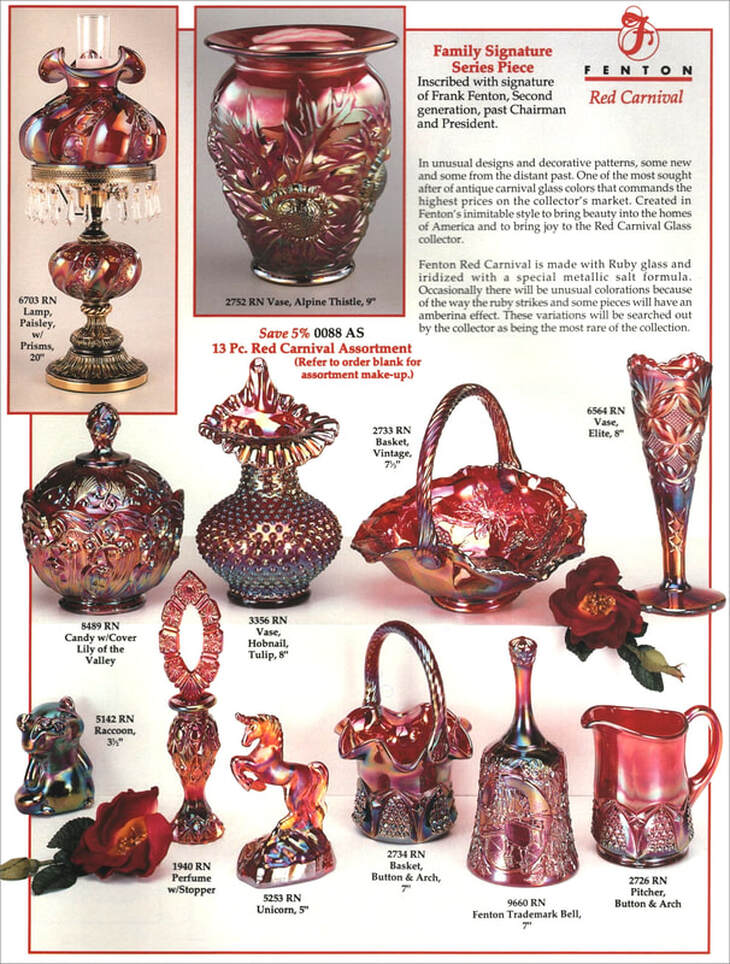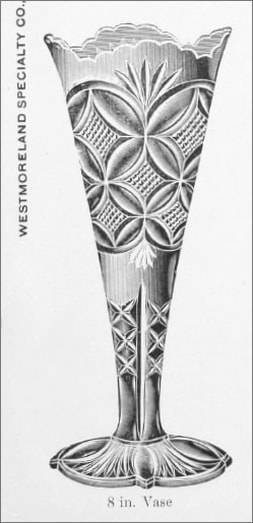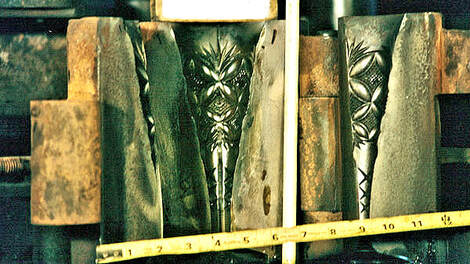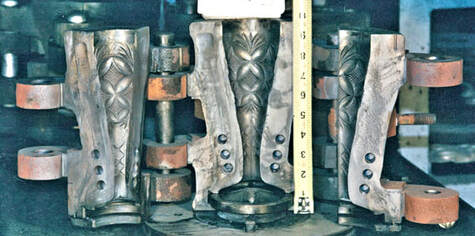Fenton's Revival Red Carnival - 1993 catalogue
G&S Thistlewood, November 2023.
Courtesy of the Glass Paper Fanatics, Fenton Art Glass Company and the Fenton Family.
|
The items shown on this catalogue page:
#6703 - Paisley with Prisms, 20" lamp #2752 - Alpine Thistle 9" vase, an old Verlys mould (“Les Chardons des Alpes”) #8489 - Lily of the Valley covered candy #3356 - Hobnail 8" vase, with crimped "tulip" or "jack-in-the-pulpit" style top #2733 - Vintage pattern handled basket 7½" |
#6564 - Elite 8" vase, an old Westmoreland pattern (see below)
#5142 - Raccoon figurine, 3½" #1940 - Perfume and Stopper #5253 - Unicorn figurine 5" #2734 - Button and Arch handled basket, 7" #9660 - Fenton Trademark (Glassmaker) Bell 7" #2726 - Button and Arch pitcher |
As with many of their Revival (Contemporary) Carnival Glass pieces, Fenton used a mixture of moulds; some were entirely new designs and shapes (made in Fenton's own mould shop, or bought in), some of them were Fenton's own moulds from earlier glass production, and some of them were moulds that they had acquired over the years from other glassmaking companies that had closed and sold off their inventory.
A case in point is the Elite 8" vase offered in this 1993 Fenton catalogue selection. It was originally a Westmoreland Specialty Company pattern, shown here, below left, from a 1905 Westmoreland catalogue. At the top of the catalogue page was the annotation: "Elite pattern. Pat. Feb 25, 1896". To our knowledge, Westmoreland did not make this vase in Carnival, either Classic or Revival.
A case in point is the Elite 8" vase offered in this 1993 Fenton catalogue selection. It was originally a Westmoreland Specialty Company pattern, shown here, below left, from a 1905 Westmoreland catalogue. At the top of the catalogue page was the annotation: "Elite pattern. Pat. Feb 25, 1896". To our knowledge, Westmoreland did not make this vase in Carnival, either Classic or Revival.
It is interesting to see that Fenton continued to use the original maker's name when they put this item into production (in various colours as well as the Red Carnival shown in this 1993 catalogue). The question is: did Fenton use the old, original Westmoreland mould (as we know that Fenton bought a number of Westmoreland moulds when that factory closed in May 1984), or did Fenton make a new mould to replicate the old one?
The answer is that it was a new mould. Shown below, right are two Elite vase moulds - both were listed in the inventory of Fenton's moulds when the factory sadly closed. The one at the top, which clearly shows its age, is the old Westmoreland mould (which had been bought from Westmoreland by Levay, stored and possibly used by Fenton for Levay, and then subsequently sent to Mosser when Fenton closed). The shiny-looking one below is Fenton's own new mould.



